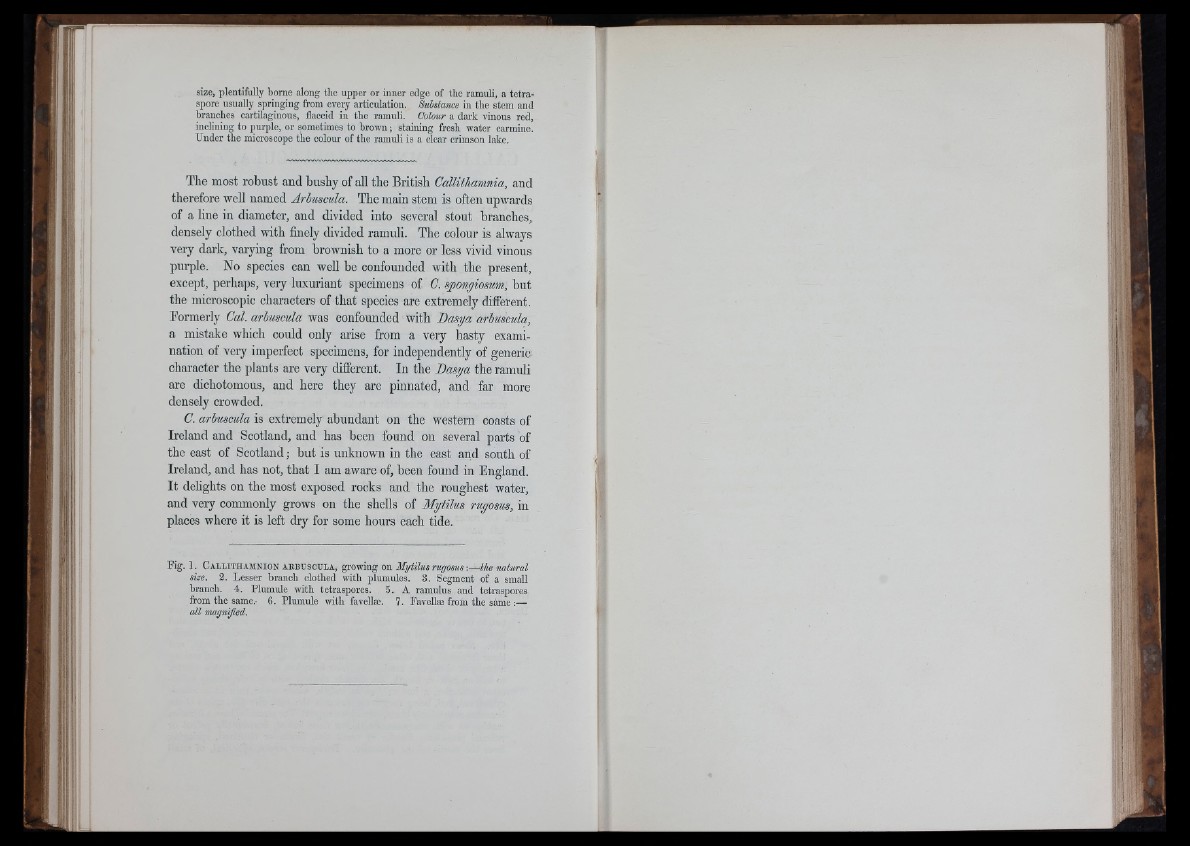
I!
size, plentifully borne along tlie upper or inner edge of tlie ramuli, a tetraspore
usuaUy springing from every articulation. Substance in the stem and
branches cartilaginous, flaccid in the ramuli, Colour a dark vinous red,
inclining to purple, or sometimes to brown ; staining fresh water carmine.
Under the microscope the colour of the ramuli is a clear crimson lake.
The most robust and bushy of all the British Callithamnia, and
therefore well named Arbuscula. The main stem is often upwards
of a line in diameter, and divided into several stout branches,
densely clothed with finely divided ramuli. The colour is always
very dark, varying from brownish to a more or less vivid vinous
purple. No species can well be confounded witb tlie present,
except, perhaps, very luxuriant specimens of C. spongiosum, but
the microscopic characters of that species are extremely different.
Formerly Cal. arbuscula was confounded witb Basga arbuscula,
a mistake wliich could only arise from a very hasty examination
of very imperfect specimens, for independently of generic
cliai-acter the plants are very different. In the Dasya the ramuli
are dichotomous, and here they are pinnated, and far more
densely crowded.
C. arbuscula is extremely abundant on the western coasts of
Ireland and Scotland, and has been found on several parts of
the east of Scotland; but is unknown in the east and south of
Ireland, and has not, that I am aware of, been found in England.
It delights on the most exposed rocks and the roughest water,
and very commonly grows on the shells of Mytilus ruyosus, in
places where it is left dry for some hours each tide.
i l
■‘'I
' u
Fig. 1. Callithamnion akbüscula, growing on Mytilus rugosus ■.— the natural
size. 2, Lesser branch clothed with plumules. 3. Segment of a small
branch. 4. Plumule with tetraspores. 5. A ramulus and tetraspores
from the same.- 6. Plumule with favellæ. 7. Favellæ from the same :—
all magnified.